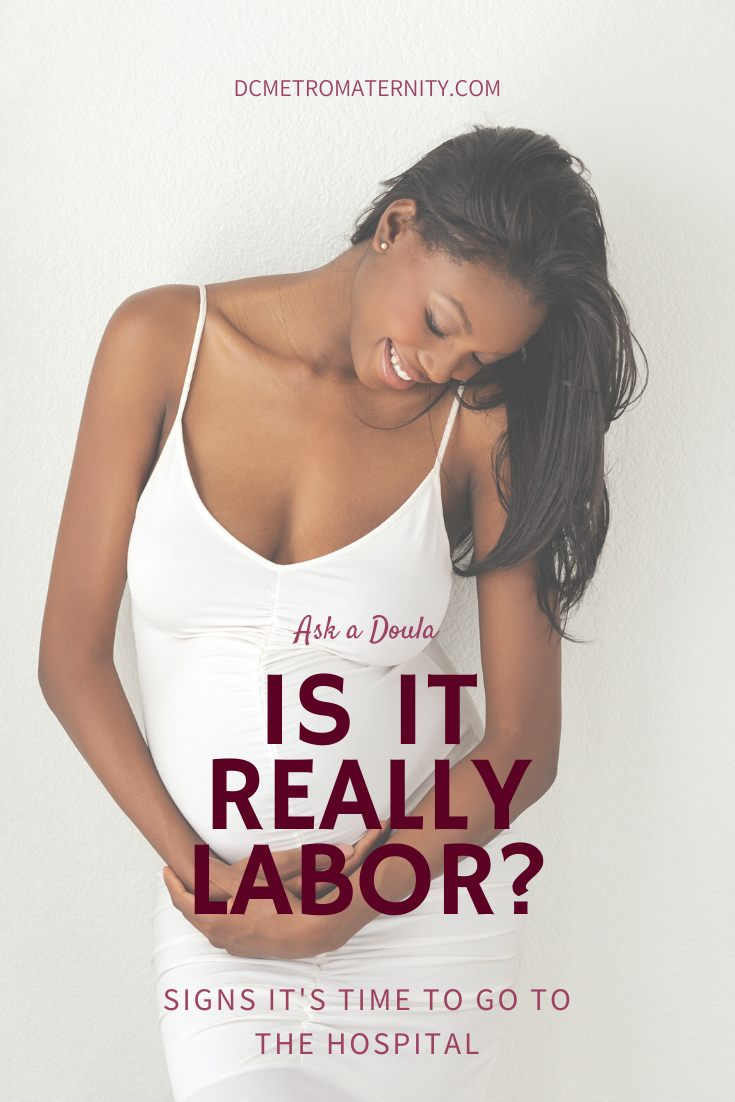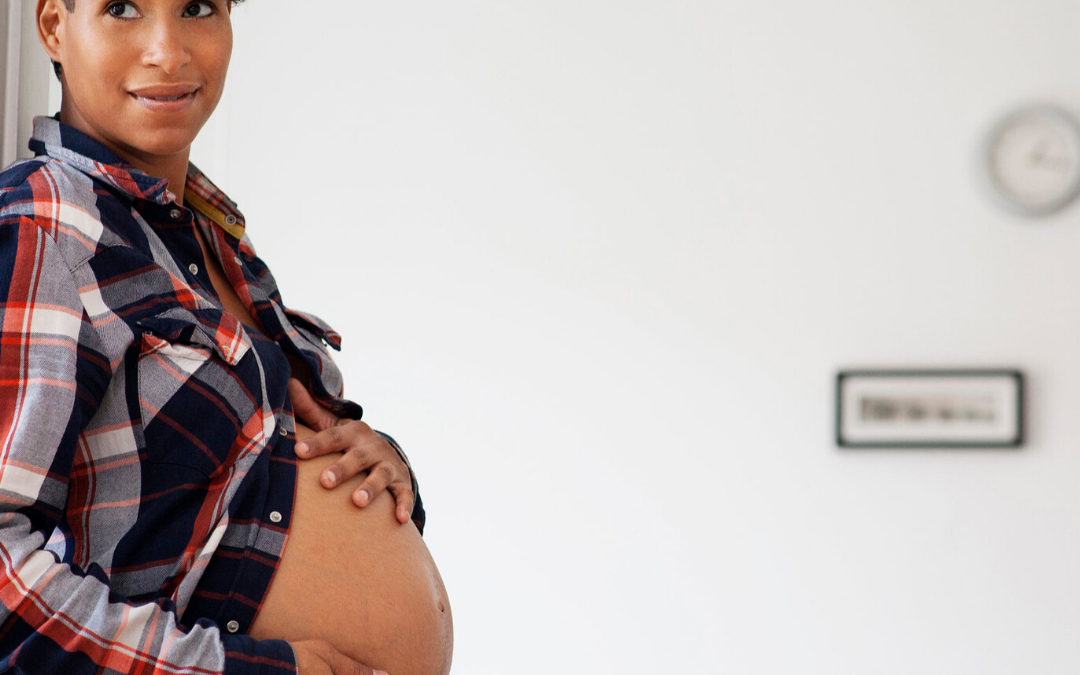You’ve spent months of pregnancy growing your baby. You can feel her sitting on your bladder, taking up the space where your lungs used to be. You’re ready to meet her, and you want to be sure that you don’t have a baby in the car.
So how will you know when to go to the hospital, when you’re in labor?
This is one of the most common questions that our students ask in childbirth education class. How do I know when the contractions mean that it’s really time to have a baby?
If you haven’t taken a class yet and you’ve only seen birth on TV, you’re probably expecting that when you’re water breaks, you throw the birth bag in the car and book it to the hospital.
But did you know that most people’s labor doesn’t start with their bag of waters breaking (also known as membranes rupturing)?
What’s more common is that at first, you feel “funny.” I can’t count the number of labor doula clients who, when they look back on their birth story say “Ya know, I woke up and something felt off.”
Maybe it seems like you’re coming down with a cold. Or you’re feeling nauseous. Maybe you just had the biggest round of diarrhea ever. (Sorry, I’m a doula, and sometimes I’m gonna have to talk about poop.)
All of these are normal reactions as your body begins to dilate your cervix, and could be signs of early labor.
It’s also totally normal at first to wonder if these are “real” contractions, especially if you’ve felt Braxton Hicks, or practice contractions. You might be thinking that this is another false alarm and delay doing anything about it.
And you know what, that’s cool. If you’re in early labor, your contractions are likely more crampy than anything. Yes, they might be big cramps, but if you can keep talking, walking and laughing (or sleeping!), and your provider hasn’t given you any cause for concern, then whether you’re in early labor or not, it’s a good idea to keep letting your body do it’s thing (assuming you and baby are healthy and your at least 37 weeks pregnant).
You’ll know when the contractions are bringing your baby closer.

I know. Everyone hates when I say that. It doesn’t seem helpful if you haven’t seen or felt it yet. For first time parents, those who had an induction with previous children, or who are hoping for a vaginal birth after cesarean (VBAC), the progression of contractions is a bit of a mystery.
But you really will know when it’s labor, as the contractions get longer, stronger and closer together.
Not yet satisfied? Okay.
So here’s a tip that your childbirth educator, doula and medical provider want you to know: 5-1-1.
This means that your contractions are:
-
Coming 5 minutes apart when timed from the beginning of one contraction to the beginning of the next…
-
Lasting at least a minute each…
-
And this continues for an hour
We recommend timing your contractions with an app, so that there’s no uncertainty about “doing it wrong”. Our favorite app is called “Full Term”, and is available for both Iphones and Androids.
Usually, by the time this happens, you’re no longer uncertain about if you’re having a baby. You need to cope with what’s going on in your body, and you’re not talking and walking through it. You, my dear, are in LABOR labor.
If your birth and pregnancy is uncomplicated, this is the time to call your OB or midwife (if you’re a DCMM client you’ve probably already been in touch with your doula) and head to your birth hospital.
And congratulations! You’re going to have a baby. Yay!
Be sure to learn more about labor support here!


